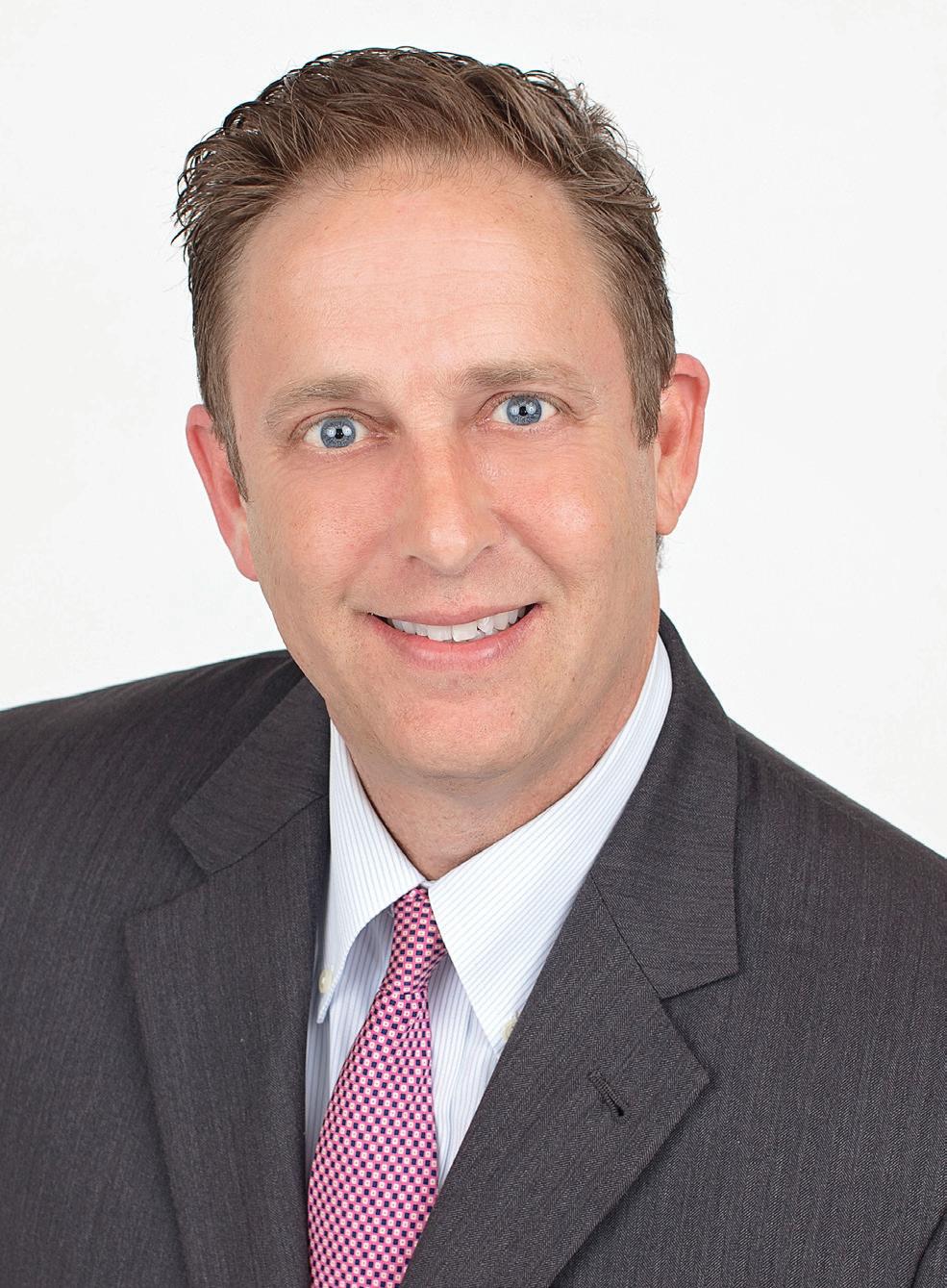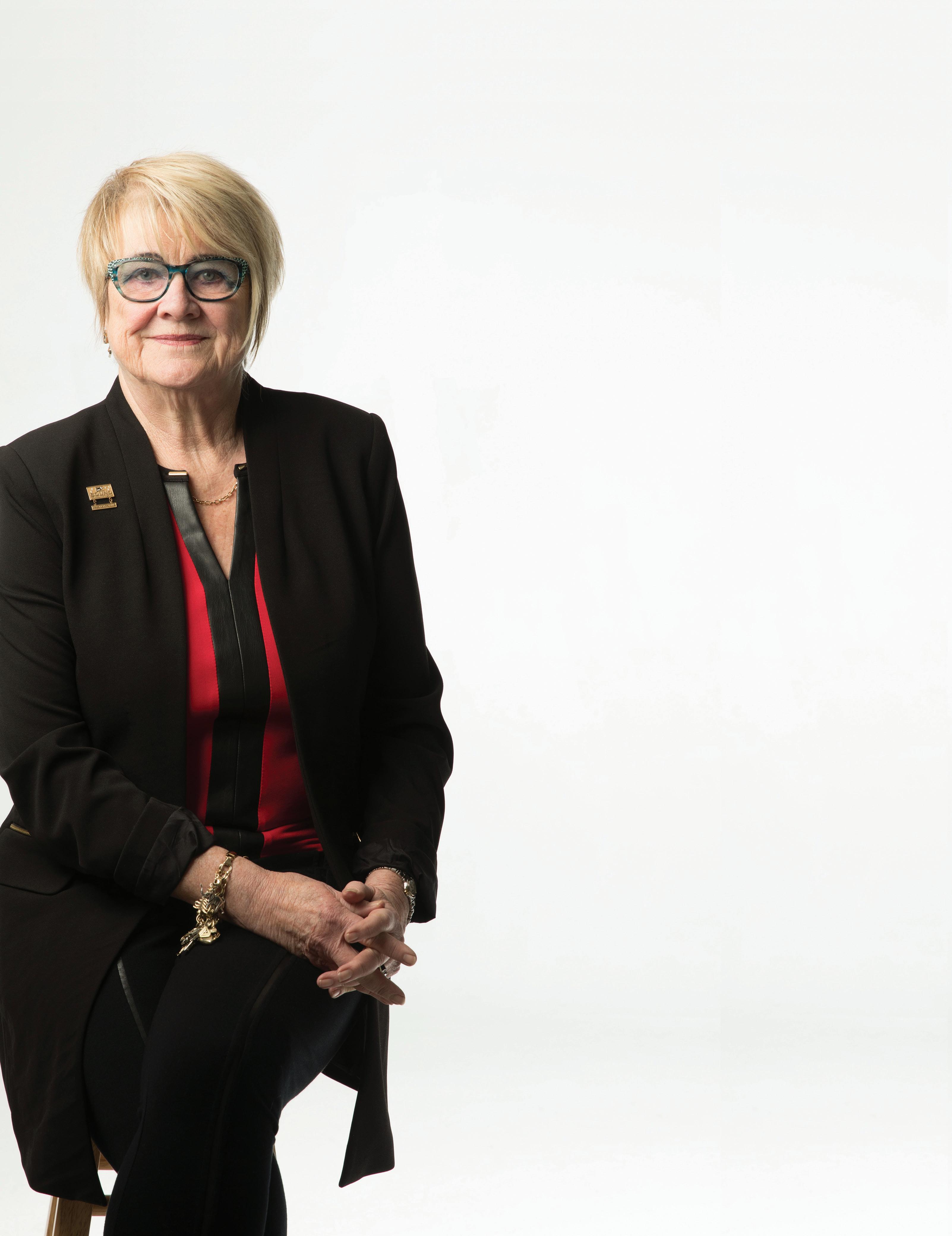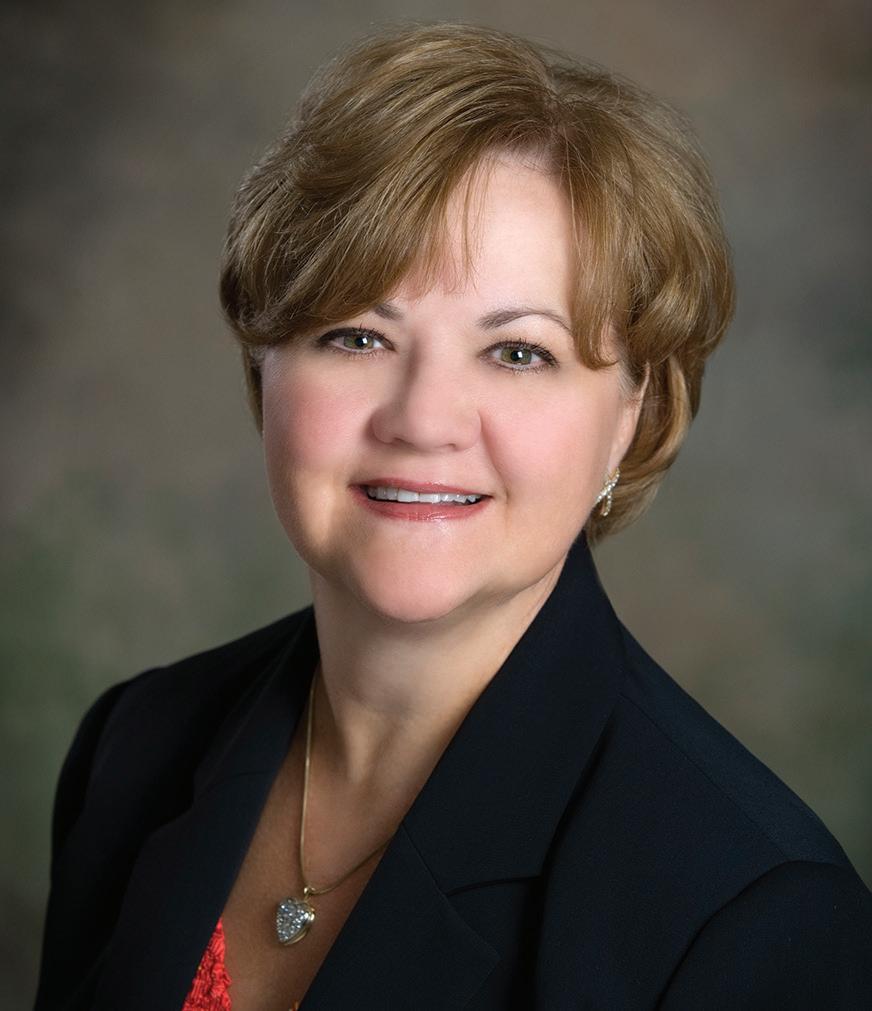
5 minute read
President’s Message
as;dfgijaofgjasogasodf Lorrie Trogden | President & CEO Arkansas Bankers Association To quote Gretchen Rubin: “The days are long, but the years are short.” October marked my one-year anniversary as the ninth President/CEO of the Arkansas Bankers Association, and what a fantastic year it has been. I have thoroughly enjoyed traveling the state getting to know all of you, as well as spending time in both our state and national capitols advocating on behalf of our industry. I am extremely thankful for our ABA team, they are the backbone of our association and keep us moving ever forward. They have given tremendous support during my first year.
Starting with state advocacy, it was announced in October that in 2020 the State Bank Department and other Department of Commerce agencies will be moving into the old Verizon headquarters on Riverfront Drive. We are monitoring moving plans to ensure that everything we worked out with the governor during the legislative session comes to fruition. I will continue to give updates in our Tuesday eNews updates.
November brought filing for state House and Senate seats, and as I am writing this, two days remain in the filing period. There are several races important to our industry in which we are utilizing our PAC money wisely. Contributing to the ABA BankPAC helps support pro-industry candidates, and it is important that we replenish what was utilized this cycle. I encourage your bank to contribute, along with your personal contribution; every dollar counts and is put to good use. For information about donating to the state and federal PAC, please visit the Advocacy page on our website (www.arkbankers.org). Great things happen when bankers come together, and your PAC contribution is one of the most important investments you can make to protect the future of our industry.
Moving on to federal advocacy, we had a group of 18 bankers on the fall D.C. advocacy trip, and everyone did an excellent job discussing industry important issues with both regulators and our congressional delegation. The trip included visits with FinCen, CFPB, FDIC, Federal Reserve, and the OCC. Our group was able to meet with the newest Federal Reserve Governor, Mikki Bowman. We talked through our list of issues and she also had many questions for us. In addition, the ABA hosted a well attended reception for our delegation and their hard working staffers. It was a successful trip, and the Association greatly appreciates our volunteers who make the trip. We would love to have even more bankers attend next year. Our spring trip dates are March 23-25, 2020, so watch for registration to open soon.
We recently concluded three ABA events — the MEGA Conference, the ELS Leadership Conference, and the Women in Banking Conference. I truly appreciate you investing your professional dollars with us, which allows us to give you a return on that investment with conferences offering the most upto-date education on hot topics by top rated national speakers. Our next big event is the Annual Convention, so save the date for April 7-9, 2020.
Rob Robinson, IV, Chairman Simmons Bank, El Dorado
Jonathan Harrell, Chairman-Elect Generations Bank, Rogers
Jim Cargill, Vice Chairman Arvest Bank, Little Rock
Tom Grumbles, Treasurer First Service Bank, Greenbrier
Cathy Owen, Past Chairman Eagle Bank & Trust, Little Rock
Lorrie Trogden, President & CEO Arkansas Bankers Association, Little Rock
BOARD OF DIRECTORS
Johnny Adams, Conway Craig Attwood, Pine Bluff Jeff Brecklein, Jonesboro Nathan Gairhan, Springdale David Jessup, DeWitt Lance Lanier, Van Buren Barry Ledbetter, Little Rock Wilson Moore, Little Rock Evelyn Morris, El Dorado Marnie Oldner, Little Rock Mark Roberts, Malvern Lori Ross, Arkadelphia Randy Scott, Blytheville Todd Smith, Magnolia Jason Tennant, Eureka Springs Lynn Wright, Little Rock
Bank Depo$it$ Where Have They Gone?
By Julie Stackhouse, Executive Vice President
Banks — especially small banks — have traditionally made money by accepting deposits from local customers and then lending the money at a higher rate. The difference — called the net interest margin — was and is used to:
• Cover overhead, other expenses and provisions for loan losses • Pay taxes • Reward investors with dividends
That model worked pretty well for decades. However, growing competitive and technological changes are altering the banking landscape. And the changing behavior of “core” depositors is affecting small-bank balance sheets.
Core Challenge$ So what is happening and why? Community bankers surveyed by state bank commissioners as part of the 2019 Community Banking in the 21st Century research and policy conference cited several factors for the challenge of both holding onto core deposits and keeping their costs down. 1
Most noted market competition, particularly from other depository institutions that had local headquarters or branches. Others pointed to internet competition, including competition from banks elsewhere in the country. Still others cited nonbank financial competitors, including the prevalence of apps that provide banking-like services. Deposits generated through those apps are held in banks, but they may be far away from the app user’s location. As one survey respondent put it, “Apps remove the need for bank products other than as holding tanks for short-term cash deposits.”
The funding challenges facing traditional banks are not limited to growing competition. Shrinking rural markets also make it difficult to attract and retain traditional core deposits. Many rural areas are facing an out-migration of population, reducing the local deposit base. And some bankers reported that younger consumers—in addition to being more comfortable with new technologies—are not saving as much or in the same way as their parents and grandparents.
New Funding $ource$, New Risk$ The change in deposit competition means new risks for many small banks. Interest rate risk tops the concerns, as deposits generated through nontraditional means are typically more sensitive to changes in interest rates, particularly rising rates. Bankers also face more uncertainty with regard to deposit longevity. Deposits may not “stick” with a bank if the depositor finds a better deal elsewhere. For that reason, banks must more carefully plan to meet unexpected deposit runoff. This is especially important should a bank experience financial difficulties.
What about the Future? Banks—as well as bank regulators—are adapting to the new funding environment but are concerned about the unintended consequences should these challenges grow. This includes a possible acceleration of industry consolidation. In the meantime, the consumer holds the key!
Notes and References 1. “Community Banking in the 21st Century (PDF).” Federal Reserve System, the Conference of State Bank Supervisors and the Federal Deposit Insurance Corp., Oct. 1-2, 2019.










